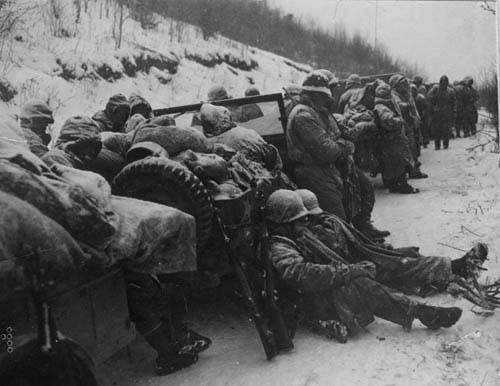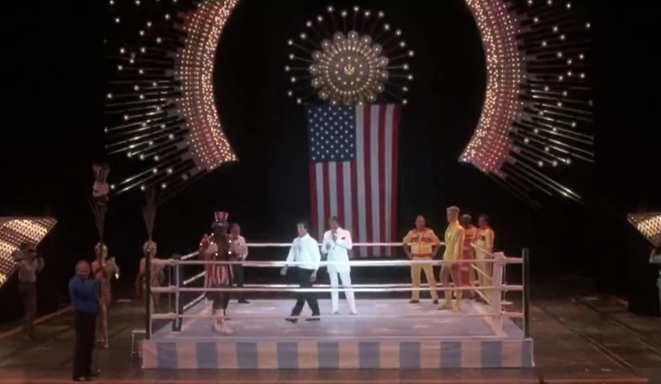John F. Kennedy planned to relax in Palm Beach after the grueling 1960 presidential campaign, in which he narrowly defeated Richard Nixon in one of the closest elections in American history. But at the end of November, his wife, Jackie, went into premature labor. Kennedy rushed to Washington to be with her and their son, John Jr. Jackie ultimately spent two weeks recovering in the hospital—and between comforting his wife and caring for his child, the President-elect found the time to write an article for Sports Illustrated.
At the request of the magazine’s editors, Kennedy took to its pages to lament what the article’s title dubbed “The Soft American.” The piece itself is nothing short of a fat-shaming opus, simultaneously retrograde and prescient, rooted in ideas that continue to rattle around the nation’s psychosocial attic like an old, tsk-tsking ghost.
Videos by VICE
In more than 2,000 words, the 35th President of the United States links Teddy Roosevelt’s fear of American subservience with Cold War paranoia. He expresses angst over children wasting away in front of the idiotbox—sound familiar?—while foreshadowing contemporary concern-trolling over the supposed dangers of participation trophies. He inadvertently and completely unscientifically predicts a public health crisis, and unwittingly encapsulates the ongoing problem of privilege masquerading as meritocracy.
Mostly, though, Kennedy wags his finger at a United States of America that, at least in his mind, was producing far too many very large, very doughy boys.
Read More: Fishing for Humans Off Newport
Kennedy wasn’t writing in a historical vacuum. His essay references Roosevelt’s 1899 speech “The Strenuous Life,” which could easily be considered “The Soft American”‘s spiritual predecessor. Speaking at Chicago’s ritzy Hamilton Club, Roosevelt famously posited that “a life of slothful ease, a life of that peace which springs merely from lack either of desire or of power to strive after great things, is as little worthy of a nation as of an individual.”
This was more or less the thrust of Kennedy’s piece, albeit less abstract. The President-elect wasn’t just worried about a collective lack of ambition and drive; he was worried that said ambition and drive began and ended on the couch. “The harsh fact of the matter is that there is also an increasingly large number of young Americans who are neglecting their bodies—whose physical fitness is not what it should be—who are getting soft,” he wrote. “And such softness on the part of individual citizens can help to strip and destroy the vitality of a nation.”
In many ways, Kennedy was simply rehashing Roosevelt’s turn-of-the-century concerns. Roosevelt surveyed a globe divvied up by rival European empires, saw a coming clash of nations, and that worried American men—and yes, this was about men, in both cases—wouldn’t be up for the fight. He warned that “bolder and stronger peoples” would “pass us by,” earning themselves, literally, “domination of the world.”
Predictably, Roosevelt was not concerned about what he dubbed the “warlike moslems” or the “wild pagans” of the Philippines but rather the colonialists who would, er, civilize them, like the English or … well, probably just the English. Nut up, Roosevelt exhorted, or else your children will have British accents.
Roosevelt was right about one thing: the clash of nations came. Twice. And America didn’t do so badly, all things considered, as this “back-to-back World War Champs” memorabilia helpfully notes. A keen observer of history might therefore conclude that battlefield victory is correlated with things like industrial capacity, scientific ingenuity, two major oceans acting like the world’s biggest, most uncrossable moat, or a willingness to develop and drop atomic bombs, and not the number of total pull-ups an army can do. Yet this was not Kennedy’s takeaway.
Why? In the President-elect’s view, America’s military draft for the Korean War didn’t go so well. Kennedy called the “decline in the physical strength and ability of young Americans” in that conflict the “first indication” that we were going soft. He also claimed that, subsequently, “almost one out of every two young Americans was being rejected by Selective Service as mentally, morally, or physically unfit.”

The Korean War went poorly because our soldiers were physically unfit, or something, according to JFK. Photo from U.S. Marine Corps History website, via Wikimedia Commons
Let’s take a quick detour down Fact-Checking Lane. First, it’s not clear how Kennedy planned to address the Americans rejected by the Selective Service for being mentally or morally unfit, or how that reflected being out of physical shape, or whether that even concerned him. Second, a 1946 study reported that the Selective Service rejection rate in the months prior to Pearl Harbor was 52.8 percent for “all men examined”—that is, even higher than the rate that so concerned Kennedy some two decades later. The rates plummeted after Pearl Harbor as draft boards were pressured to send young men to war, ready or not.
In other words, Kennedy’s assertion that “the stamina and strength which the defense of liberty requires are not the product of a few weeks’ basic training or a month’s conditioning” doesn’t hold up to even basic scrutiny. Furthermore, the same 1946 study provided a five-point list detailing why Selective Service rejection rates were an incredibly poor measure of national health—for example, changes in the military’s standards or the demographics of who is being inducted into service—and even quoted Leonard G. Rowntree, then the Chief of the Selective Service Medical Division, who said that “Selective Service, therefore, regards the rejection rate … as useful in measuring the nation’s health only in terms of the limitations placed upon such rates.”
Still, Kennedy had his narrative. He did provide other evidence that American youth were lagging behind other nations in physical fitness, most notably the Kraus-Weber studies that found 58 percent of American kids failed a basic strength-and-flexibility fitness test, while only 8 percent of Swiss kids failed. Unsurprisingly, this worried the soon-to-be President, since he might have to send the little tubbers to fistfight Russian aggression, Rocky IV-style, on a moment’s notice if the Cold War turned hot.
“We face in the Soviet Union a powerful and implacable adversary determined to show the world that only the Communist system possesses the vigor and determination necessary to satisfy awakening aspirations for progress and the elimination of poverty and want,” the President wrote in a sentence that disproves the presence of a ghostwriter. “To meet the challenge of this enemy will require determination and will and effort on the part of all Americans. Only if our citizens are physically fit will they be fully capable of such an effort.”

Screengrab via Youtube
Who or what was to blame for America’s underage porkers? Kennedy had many targets, but the ones to which he frequently returned remain familiar. He singled out cars: “A single look at the packed parking lot of the average high school will tell us what has happened to the traditional hike to school that helped to build young bodies.” He hammered television, too, as well as “the movies” and “the myriad conveniences and distractions of modern life,” all of which “lure our young people away from the strenuous physical activity.” One shudders to think what Kennedy would have to say about selfies.
As we all know, Kennedy’s call to less-flabby arms did not end the film and TV industries. Nor did it prompt Americans to reject modern conveniences like washing machines and supermarkets in favor of, say, the noble return of lumberjacking. The article did, however, touch an ongoing national nerve, and managed to produce lasting effects.
First came the Presidential Physical Fitness Test, and with it, decades of humiliation in school gym classes. When the Cold War ended without a single shot fired, let alone any apocalyptic clash of American chubsters against Soviet strongboys, the test was quietly phased out, but our schools have continued their obsession with BMI, producing shame, embarrassment, and occasionally deadly eating disorders in children. Meanwhile, soaring childhood obesity rates—from 5 percent of American children in the 1970s to 17 percent through 2010—are far higher than anything Kennedy witnessed in school parking lots during his time.
It probably doesn’t come as a surprise that making kids perform the sit-and-reach every year didn’t fix America’s childhood obesity problem, nor that there are other societal factors at play. For example, the government subsidizes sugar, one of the largest contributors to obesity and a major ingredient in almost every child-targeted snack.
Amazingly enough to modern eyes, there was nothing in Kennedy’s piece about eating habits. Given nascent nutrition science at the time, this is somewhat understandable, but the week after his article was published, the New York Times ran a small item on page 34: “An Infant’s Chubbiness May Become Handicap.” Child health specialist Edward T. Wilkes had just published a study of 300 young girls that found “three-fourths of the youngsters were hungry between meals and filled up with candies, cake, ice cream, chocolate milk or pretzels. Many nibbled on high-calorie tidbits as they watched television.”

Sample American diet, 1950-present. Photo by National Cancer Institute, via Wikimedia Commons
Kennedy’s diagnosis of our big, hefty sons as a national security threat was a bit hysterical, and his prescription—more pushups, basically—was woefully incomplete. He wasn’t totally wrong: it is indeed healthier for kids to be running around and playing than sitting and eating, and obesity is absolutely a problem. Only that’s not exactly a novel point, and it’s about as far as his argument goes.
At the same time, the President-elect did inadvertently illustrate a broader point about national health and wellness that transcends his era. According to the publisher’s note in the front of the issue, Sports Illustrated asked Kennedy to write the article because of his active life at 43 years old. A photographer followed him around his Kennebunkport mansion to survey this lifestyle, which ran in the space following “The Soft American.” It featured Kennedy walking serenely along his private beach in a blazer, sitting on his sailboat letting the cool autumn air rip through his perfect hair, and writing in a notepad to prepare for more sailing.
This, apparently, was the “vigorous life” to which Kennedy referred. It’s a testament to American privilege, in which one of the richest, most elite, and singularly fortunate people in the country—simply by virtue of being born into the right family—is able to live an active life primarily because he can afford to do so.
Perhaps if we all had a private beach on which to scamper, or a sailboat in which to cruise, or the power to carve out time for both, then the rest of us could enjoy the same lifestyle. But that has never been America, and it sure as hell isn’t America now. One of our worst national habits is indulging rich people who want to tell the less fortunate how they should behave, while being completely ignorant of the harsh realities and scant choices imposed by a lack of money.
We know that childhood obesity is linked with future health issues and disproportionately affects minority children. But we slash spending for physical education in schools; dole out cheap, nutrient-poor school lunches; transform youth sports into a pricey, club-and-travel-team rat race for prestige and college athletic scholarships; bombard our kids inside and outside their classrooms with ads for sugar-loaded processed snacks and drinks; fail to address the healthy-food deserts that many of our most needy fellow citizens live within; act like health care, including wellness initiatives, is less a smart, compassionate, cost-saving public policy measure than a giveaway to undeserving moochers; and largely tell our working poor that hey, maybe you should join a gym. Anyone can be healthy, we insist, if they just want it badly enough. And also have a place in Kennebunkport.
Want to read more stories like this from VICE Sports? Subscribe to our daily newsletter.




